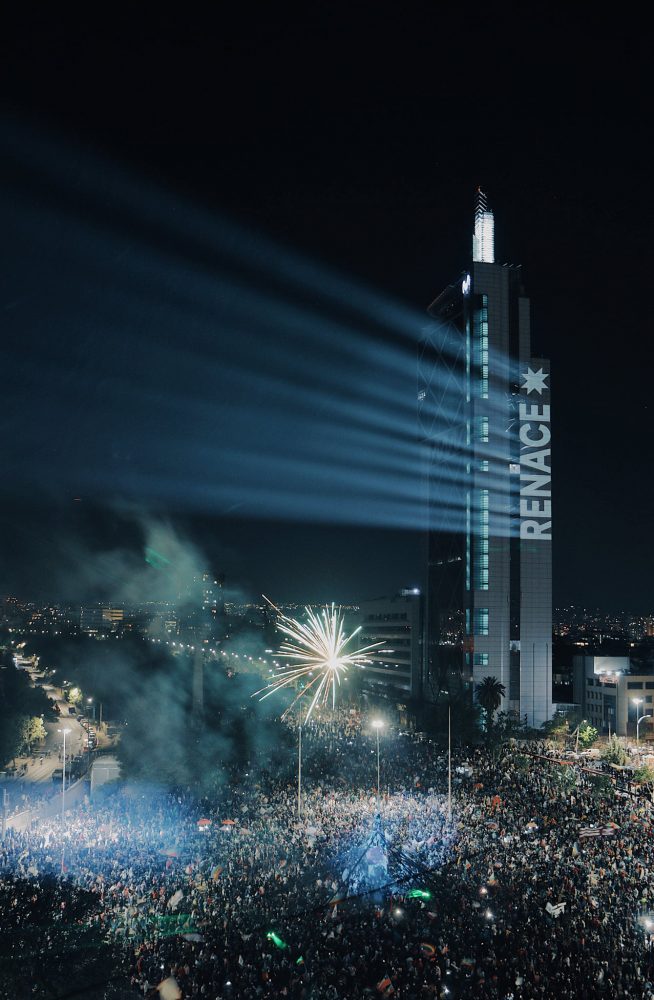Design & Activism Issue 5 2021
Delight Lab: Light as Political Expression
Carolina Arévalo
During the social outbreak which began on October 18, 2019, Chilean society witnessed a tremendous display of collective, self-managed, and performative artistic actions that took over the public space of Santiago and other cities in the country. Various artists expressed solidarity with the voices of the people in the streets, articulating the political demands of a movement that made Chilean citizens wake up to the commercialization of social rights and the persistent abuse of power within the government.

Fig. 1 Gonzalo Donoso, Humanidad (Humanity), Santiago de Chile, 19 May 2020. Courtesy of Delight Lab.

Fig. 2 Luis Bahamondes, Renace (Rebirth), Santiago de Chile, 2020. Courtesy of Delight Lab.
In the context of mass mobilization, the Delight Lab collective—made up of the siblings Andrea and Octavio Gana—assumed a fundamental role displaying social discontent through their art. Their light interventions were carried out in different spaces of the capital, areas chosen to attract attention and signify the artists’ solidarity. One location in particular, the Torre Telefónica (Figs. 1 and 2), is a building located in the nerve center of the city. Through these interventions, the group made visible the dissent and discomfort of a large part of Chilean citizens regarding neoliberal policies imposed under the Pinochet dictatorship, which remains in power. The artists’ messages regarding the demands of the social movement, the violation of human rights, the validity of the constitution, and even the situation of hunger experienced during the COVID-19 pandemic, have placed those subjectivities and communities historically silenced or marginalized at the center of public debate.
In a creative way, with a refined design using powerfully luminous texts, the Gana siblings have managed to both occupy and resignify emblematic urban spaces, disputing their symbolic meaning and rewriting the city from a political position—in the broadest sense—exempt from censorship. “Light has been the way we have to express ourselves,” 1 explains Andrea Gana.
is a curator, researcher, and designer based in Santiago, Chile. She received her MA in the History of Design and Curatorial Studies in 2016 at Parsons School of Design and Cooper Hewitt, Smithsonian Design Museum. She recently curated the exhibition Sheila Hicks: Reencuentro at the Chilean Museum of Pre-Columbian Art (Santiago, Chile, 2019) and Soft Territories at Knockdown Center (New York, 2019). She has contributed to several publications, including the exhibition catalogue for Free Threads: Sheila Hicks (Puebla, Mexico, 2018) and the article “Anni Albers’ Pre-Columbian Influences and Legacy” (Goethe Institute, Colombia, 2019).
Notes
- Emilia Duclos, “Intervenciones Lumínicas En El Espacio Público: ‘El Arte Tiene La Fuerza Para Reflexionar En Torno a Los Debates Sociales.’” La Tercera, 16 June 2020.
